We took a short break from the blog this summer, but are happy to be back this week with one of our favorite trees--the Japanese maple, Acer palmatum. This species has an incredible variety of sizes, colors, leaf shapes, and habits. Ranging in height from tiny dwarfs up to medium-size trees, similar to a redbud or dogwood, Japanese maples also come in weeping or upright habit. While leaf color and texture in the summer and fall are some of the most recognizable attributes, the architecture of the truck and branches are stunning year-round (but most noticeable in winter and spring), making this a truly 4-season addition to the landscape.
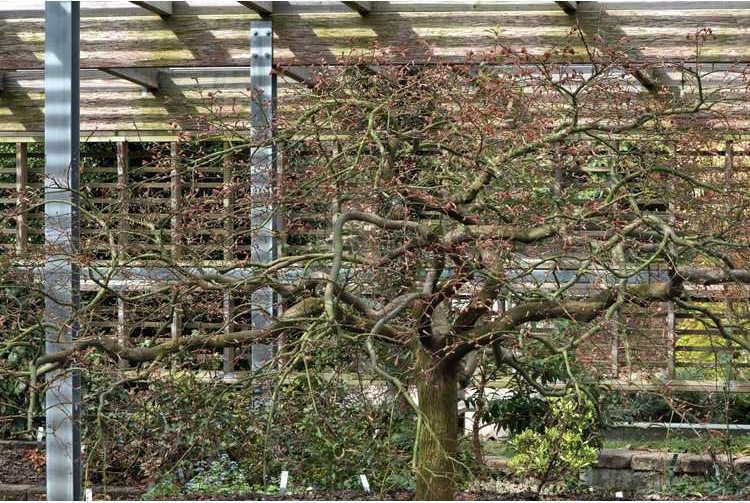 Note the beautiful twisting structure of the branches.
Note the beautiful twisting structure of the branches.
Photo credit: Jeanne Wilkinson
JCRA Photograph Collection
Pruning
Japanese maples require very little pruning. They should never be sheared or topped, as this will ruin the structure of the tree. The only pruning required is occasional selective pruning to remove branches that are diseased, crossing or rubbing on other branches (this can create a wound where pathogens can enter), or need to be removed to increase air or light infiltration (thinning). When in doubt, err on the side of caution or ask a professional. Remember that you can always prune a branch later, but you can't put it back once you've cut it!
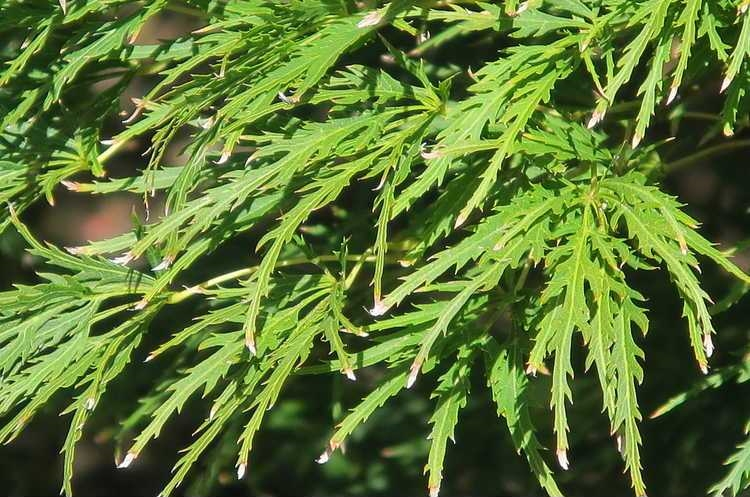 Acer p. 'Waterfall'
Acer p. 'Waterfall'
Photo credit: Maryann Debski
JCRA Photography Collection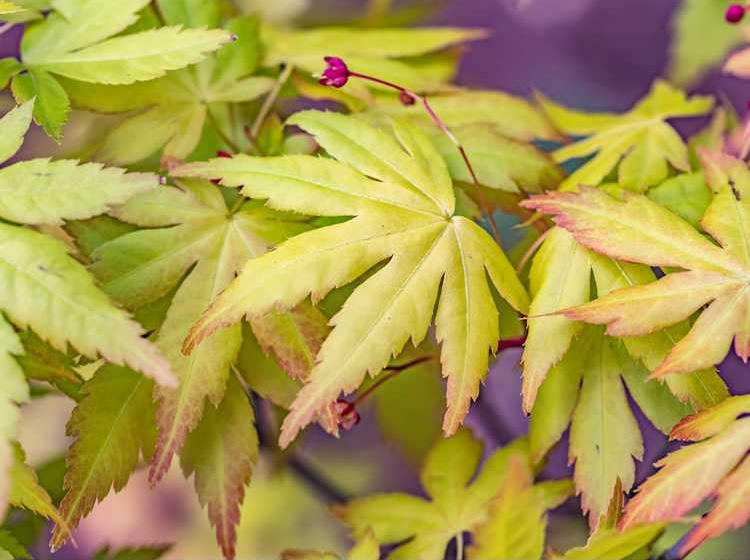 Acer p. 'Orange Dream'
Acer p. 'Orange Dream'
Photo credit: Kristi Traynor
JCRA Photography Collection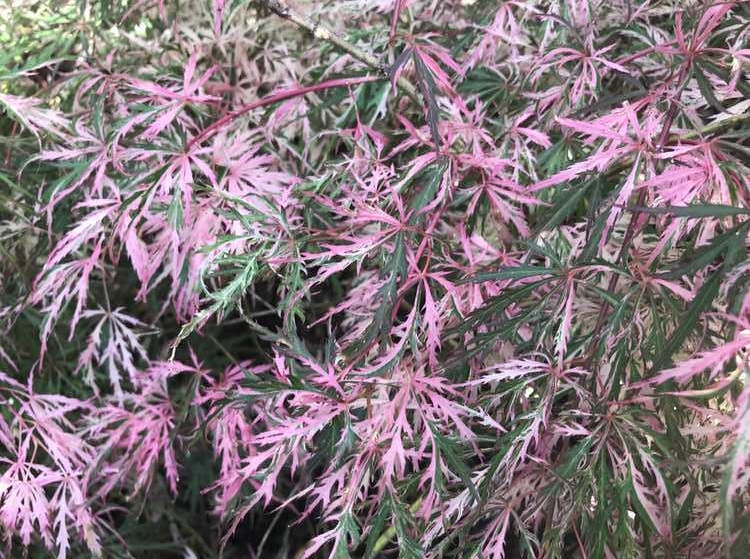 Acer p. 'Hana Matoi'
Acer p. 'Hana Matoi'
Photo credit: Nancy Doubrava
JCRA Photography Collection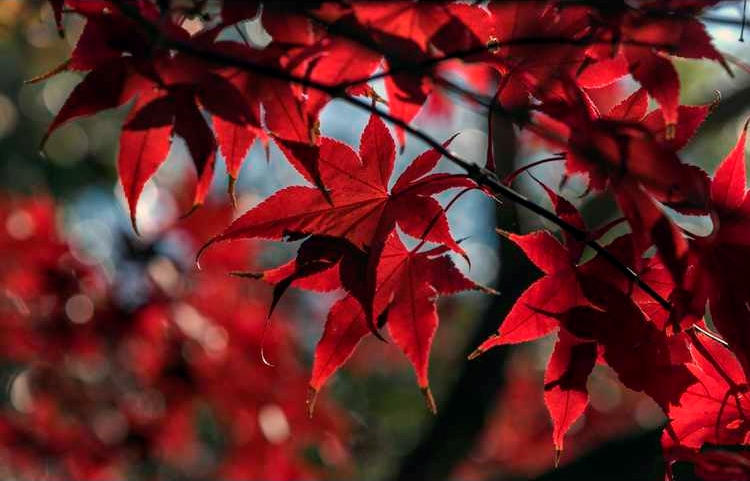 Acer p. 'Bloodgood'
Acer p. 'Bloodgood'
Photo credit: Jeanne Wilkinson
JCRA Photography Collection
ID Tips
- The leaves of Japanese maples have incredible variety, as you can see above, but they will always grow in opposite pairs along the stems, and will always have 5-11 palmate lobes (lobes that radiate from a central point, like fingers from a palm). Sometimes, the leaves will appear finely dissected, or lacy, especially on weeping varieties. Compared to other species of maple, the leaves are smaller, and the lobes are more delicate, pronounced, and pointed. See images above.
- The seeds of maple trees are a type of seed called "samaras" and you probably called them helicopters and played with them as a child. Japanese maples typically have pink to red samaras, and they are smaller than other species of maple. See below.
- The trunk of a Japanese maple is typically more twisted and has smoother bark than other types of maples. The immature bark is often pale green, but may also be colored coral, pinkish, red, or purple depending on the cultivar.
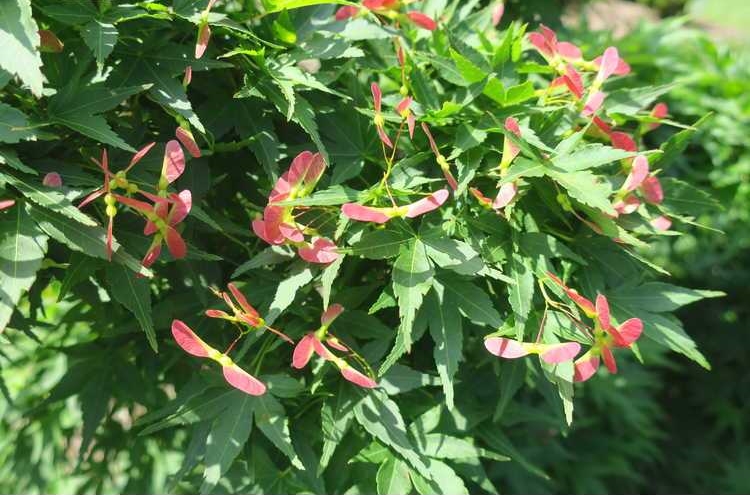 Acer p. 'Shishi Yatsubasa'
Acer p. 'Shishi Yatsubasa'
Photo credit: Maryann Debski
JCRA Photography Collection
Going into fall, be on the lookout for outstanding color from these magnificent trees!
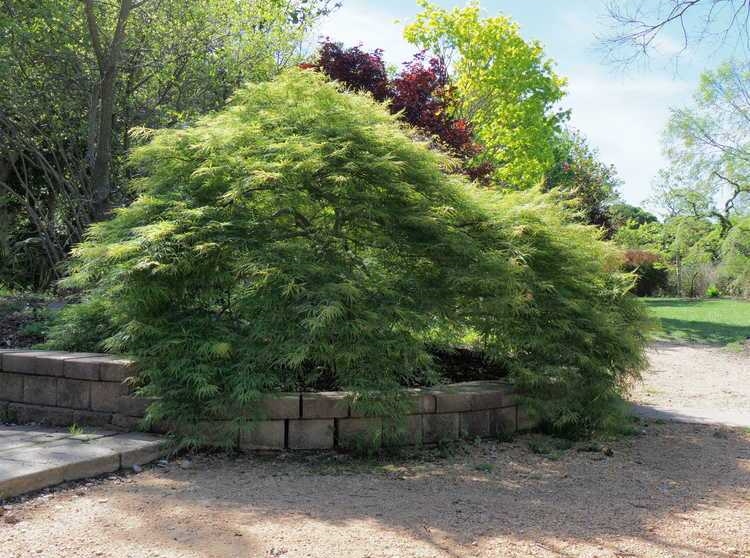 Visit the JC Raulston Arboretum to see an extensive collection of different Japanese maples, like this large weeping specimen (Acer p. 'Green Hornet').
Visit the JC Raulston Arboretum to see an extensive collection of different Japanese maples, like this large weeping specimen (Acer p. 'Green Hornet').
Photo credit: Susan Bailey
JCRA Photography Collection